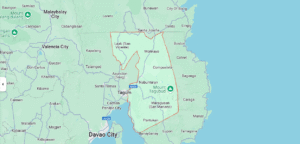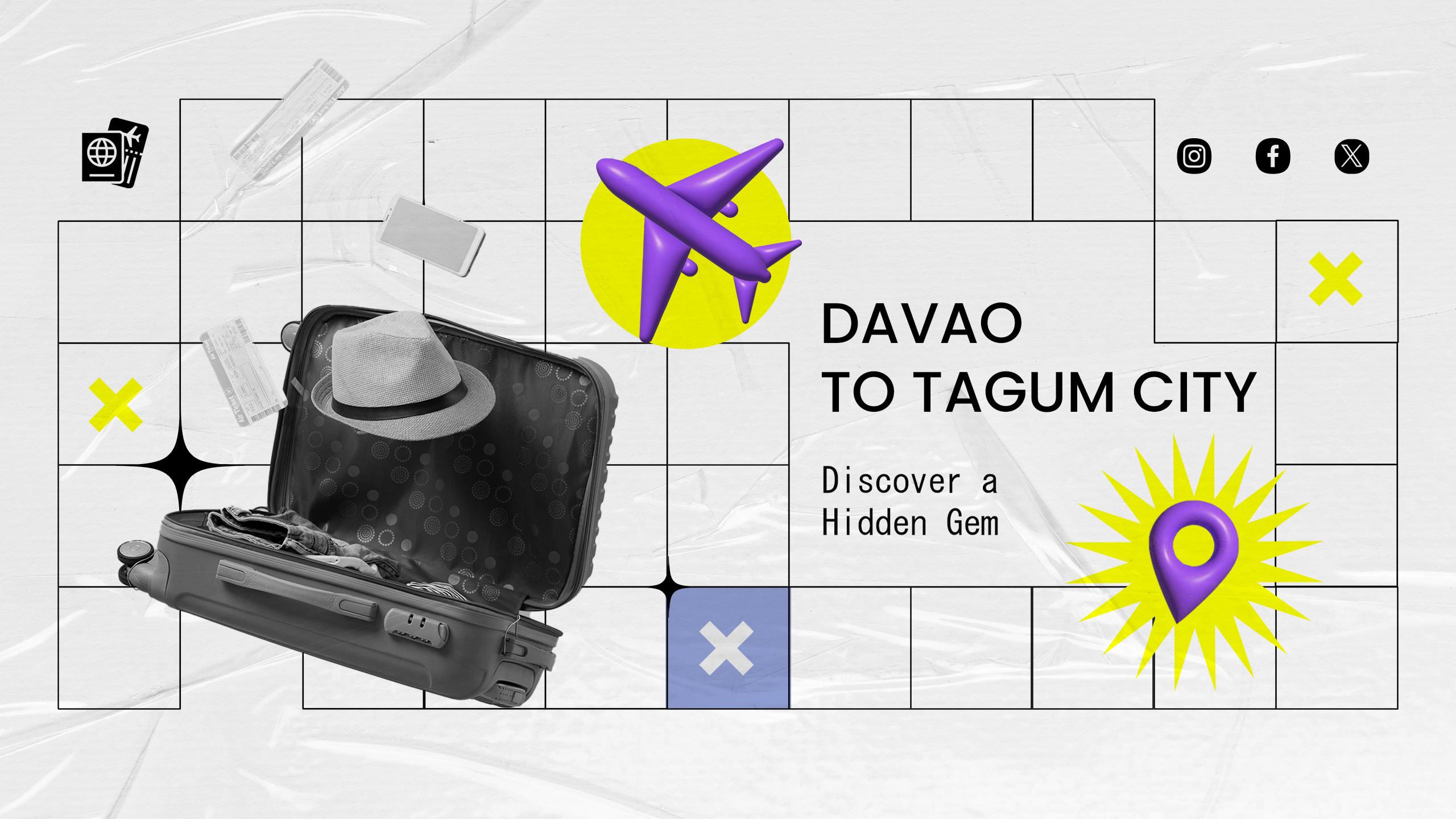When travelers think of Mindanao, major cities like Davao City or Davao Tagum often come to mind. But nestled just a short drive away lies one of the region’s most underrated destinations — Davao de Oro. Formerly known as Compostela Valley, this province is a vibrant mix of nature, culture, agriculture, and emerging business opportunities.
In this blog post, we’ll take you through the beauty, potential, and exciting transformation happening in Davao de Oro — and why its connection to Davao Tagum is key to unlocking regional growth and discovery.
Where is Davao de Oro?

Davao de Oro is a landlocked province in the Davao Region of Mindanao. It shares borders with Davao Oriental, Davao del Norte, and Agusan del Sur. Its capital, Nabunturan, is slowly making its mark as a provincial hub, but its charm goes beyond its administrative function.
Update: Nabunturan now has Jollibee a Fast Food loved by Filipinos.

What makes Davao de Oro strategically important is its proximity to Davao Tagum. Tagum, being the capital of Davao del Norte, acts as a gateway to Davao de Oro. With only about an hour’s drive between them, Tagum serves as a critical economic, transport, and cultural link to the province.
Natural Wonders and Adventure Spots
Davao de Oro boasts a rich tapestry of natural attractions — perfect for eco-tourism and adventure seekers. From majestic mountains to hidden waterfalls, the province is a haven waiting to be explored.
1. Mt. Candalaga
Located in Maragusan, Mt. Candalaga is a favorite among hikers. It offers panoramic views of surrounding landscapes and is famous for its Rafflesia flowers — one of the world’s largest blooms. Hikers from Davao Tagum and nearby cities often travel here for weekend treks.

2. Marangig Falls
Also in Maragusan, this multi-tiered waterfall system features cool, crystal-clear waters surrounded by lush greenery. It’s perfect for nature lovers coming from the hotter lowlands of Davao Tagum.
3. Mainit Hot Springs
The natural hot springs in Maco are believed to have healing properties. Locals and tourists alike enjoy its warm, soothing waters, especially after long travels or hikes.

Agriculture and Gold: A Province of Riches
Davao de Oro is not just beautiful — it’s bountiful. The name “de Oro” (of gold) reflects both its literal and symbolic wealth.
Gold Mining
The province has long been associated with mining, particularly in the areas of Monkayo and Pantukan. Small-scale mining continues to be a source of livelihood, although the local government is promoting responsible and sustainable practices.
Agricultural Hub
Beyond mining, Davao de Oro is also an agricultural powerhouse. It produces:
- Bananas
- Coconuts
- Rice
- Coffee
- Cacao
Many products grown here are processed or distributed via Davao Tagum, reinforcing the economic ties between the two areas. As Tagum grows its trading and logistics hubs, Davao de Oro farmers gain better access to regional and even international markets.
The Rise of Digital and Local Business
Davao de Oro is slowly embracing digital transformation. Local entrepreneurs are starting to take advantage of online platforms to promote their products and services.
One such initiative is DavaoDeOro.com, a platform designed to promote local businesses, tourism, and events in the province. As more residents connect with audiences beyond their barangays, Davao Tagum emerges as a partner in digital expansion, offering internet infrastructure, logistics, and tech education.
Culture and People
The people of Davao de Oro are known for their resilience, hospitality, and deep cultural roots. The province is home to indigenous communities such as the Mansaka, Mandaya, and Manobo, each with their own traditions, crafts, and festivals.
Festivals to Experience
Bulawan Festival – Celebrated in March, this province-wide festival showcases local culture, gold mining heritage, and agricultural bounty.
Kaimunan Festival – An indigenous celebration held in various parts of the province.
Karawasan Festival – A cultural dance festival in San Francisco, showcasing ethnic dances and colorful costumes.
Many Tagumeños attend these festivals, further bridging cultural connections between Davao de Oro and Davao Tagum.
Binulig Festival of Compostela – Featuring the Bountiful harvest of Fruits
Infrastructure and Development
One of the most exciting developments in the region is the continued improvement of road networks connecting Davao City, Davao Tagum, and Davao de Oro. The completion of bypass roads and highway expansions reduces travel time, making it easier for tourists, investors, and goods to move between provinces.
The Mindanao Railway Project, which includes Tagum as a major station, is expected to further boost accessibility and economic integration between Davao de Oro and its neighboring cities. Once completed, travel from Tagum to key areas in Davao de Oro will be faster and more efficient.

Tourism and Investment Potential
The provincial government of Davao de Oro is actively encouraging eco-tourism and agri-tourism investments. The province’s tourism strategy emphasizes sustainable development, highlighting:
- Farm tourism
- Community-based tourism
- Environmental preservation
Entrepreneurs from Davao Tagum and even abroad are beginning to explore the potential of opening resorts, cafes, and eco-lodges across scenic areas in Maragusan, New Bataan, and Compostela.
Why You Should Visit Davao de Oro
If you’re based in Davao Tagum or visiting the Davao Region, Davao de Oro is a must-add to your itinerary. Here’s why:
✅ Undiscovered Beauty – Far from the crowded tourist spots, Davao de Oro offers serene experiences in nature.
✅ Cultural Richness – From indigenous traditions to local crafts, there’s so much to learn and experience.
✅ Warm People – The locals are welcoming, helpful, and proud to share their home.
✅ Accessibility – Thanks to its proximity to Davao Tagum and improved roads, it’s easier than ever to explore.
How to Get There from Davao Tagum
By Bus or Van: From Tagum City Public Terminal, you can take vans and buses heading to Compostela, Monkayo, or Nabunturan. Travel time ranges from 45 minutes to 2 hours depending on your destination.
By Private Car: The main highway from Tagum to Davao de Oro is well-paved, scenic, and safe for travel. Make sure to check weather updates during the rainy season.
Check via Pag-Asa website: https://www.pagasa.dost.gov.ph/weather
By Motorbike (For Adventurers): Some locals take motorbikes via alternate routes for a more thrilling ride through the mountains and valleys.

uuet31